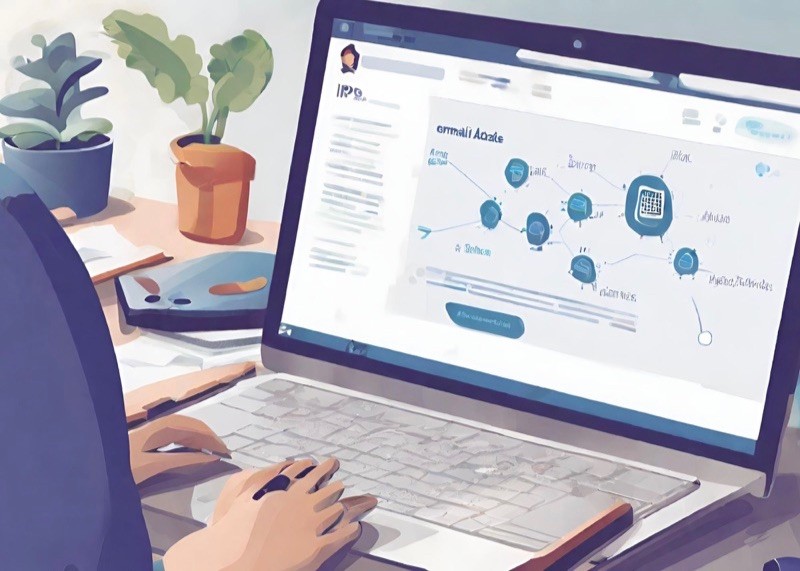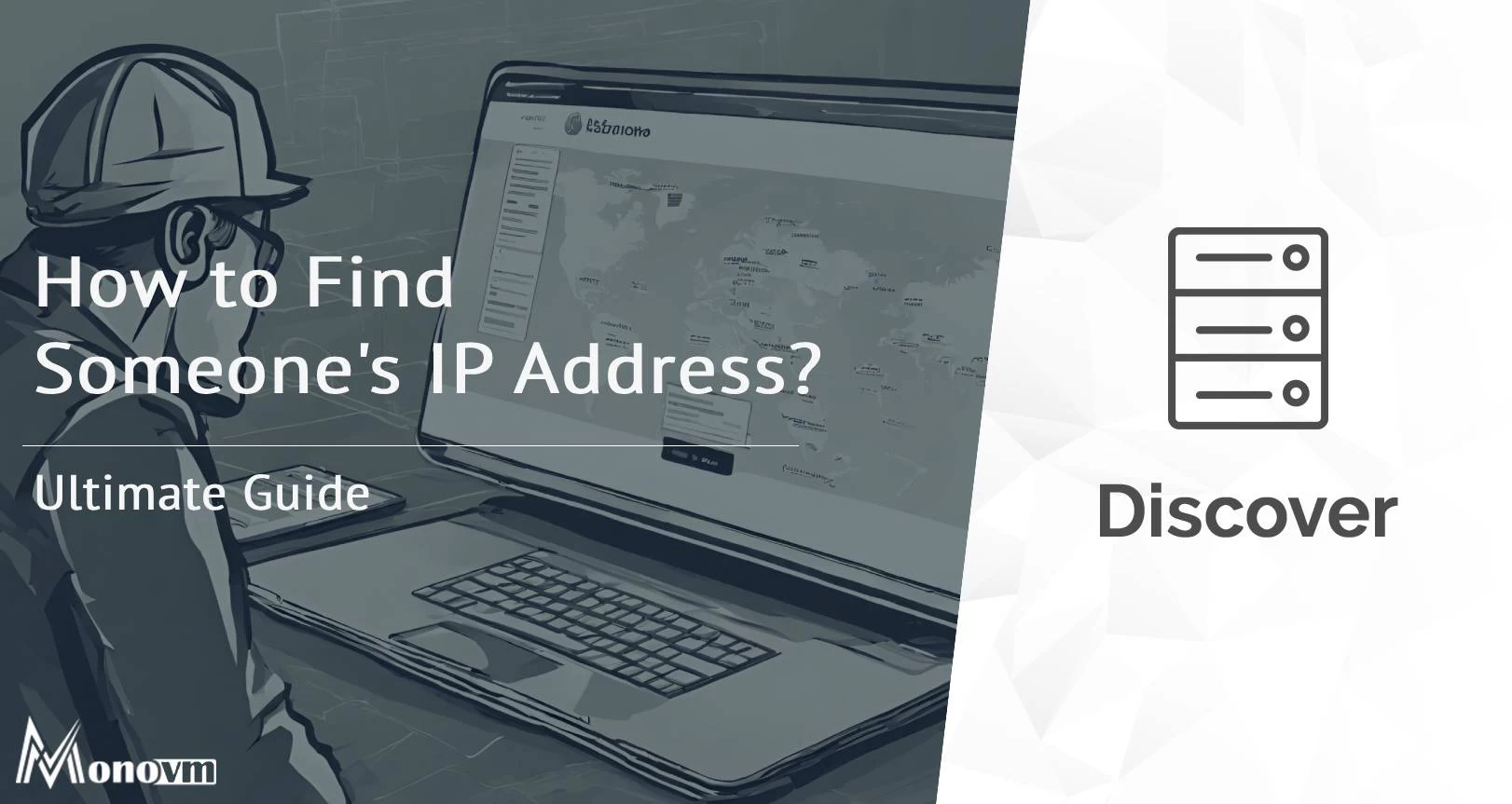List of content you will read in this article:
In today's digital age, the concept of an IP address (Internet Protocol address) may seem like a mysterious string of numbers and dots, but it plays a crucial role in how devices communicate on the Internet. Whether you're a website administrator, a cybersecurity enthusiast, or simply curious, there are legitimate reasons why you might want to learn how to find someone's IP address. This guide will walk you through the process step by step, covering various methods and their applications.
What is an IP Address?
An IP (Internet Protocol) address is a fundamental component of the Internet, serving as a unique numeric IP identifier for each device connected to the global network. Much like a physical address in the real world, an IP address distinguishes individual devices and enables them to communicate effectively within the digital realm. These addresses come in two primary versions: IPv4 (Internet Protocol version 4) and IPv6 (Internet Protocol version 6). Understanding IPv4 vs IPv6: Which is right for you?
IPv4 addresses typically consist of four sets of numbers separated by periods, such as "192.168.1.1," while IPv6 addresses are more complex, incorporating both numbers and letters, like "2001:0db8:85a3:0000:0000:8a2e:0370:7334." When you access a website, send an email, or engage in any online activity, data packets containing your device's IP address are exchanged between devices and servers, facilitating the smooth flow of information across the internet.
Why Would You Want to Find Someone's IP Address?
Before we dive into the methods, it's essential to understand why you might want to find someone's IP address. Here are some common scenarios:
- Enhancing Online Security: When you suspect unauthorized access to your online accounts or network, identifying the source IP address can help you take measures to secure your digital assets.
- Blocking Unwanted Traffic: Website administrators often seek to block specific IP addresses to prevent spam, cyberattacks, or disruptive behavior from certain users. Discover the steps to block IP addresses in MikroTik Router
- Investigating Suspicious Activity: If you notice suspicious behavior online, such as hacking attempts, harassment, or cyberbullying, tracking the source IP address can aid in investigations or reporting to authorities.
- IP Geolocation Data: IP addresses can provide insights into the geographical location of users. IP address geolocation can be valuable for businesses targeting specific regions or ensuring compliance with regional regulations.
- Network Troubleshooting: IT professionals may need to find someone's IP address to diagnose network issues or resolve connectivity problems. Click to explore essential CMD networking commands.

The Ethical Implications of Finding Someone's IP Address
While the ability to find someone's IP address can be a useful tool, it also comes with ethical responsibilities. It's essential to consider these ethical implications before attempting to uncover someone's IP address with an IP locater:
1. Privacy Concerns
Every individual has a right to privacy, both online and offline. Attempting to discover someone's IP address without their consent can be seen as an invasion of their privacy. Always respect boundaries and seek authorization when necessary.
2. Legal Boundaries
The legality of finding someone's IP address varies by jurisdiction and intent. Using this information for unlawful purposes, such as hacking or stalking, is a serious offense. Ensure that your actions comply with local and international laws.
3. Consent and Authorization
In cases where you need to access someone's IP address, seek their consent whenever possible. Ethical conduct involves obtaining permission and explaining the purpose of the IP lookup service.
4. Misuse of Information
Be cautious not to misuse the IP address information you obtain. It should only be used for legitimate purposes, such as network troubleshooting, cybersecurity, or verifying online identities.
5. Cybersecurity
Recognize that using IP address finders can have cybersecurity implications. If you're concerned about your own IP address being discovered, take proactive measures such as using a VPN (Virtual Private Network) to protect your online identity.
How to Find Someone's IP Address
Using an Online IP Lookup Tool
Difficulty: Easy
One of the simplest and most accessible methods to find someone's IP address is by utilizing online IP lookup tools. These tools are user-friendly and provide quick results. Here's how to use them:
- Select a Reputable IP Lookup Website: Begin by choosing a trusted IP lookup website such as WhatIsMyIPAddress.com or WhatIsMyIP.com. These websites offer reliable and up-to-date information.
- Access the IP Lookup Tool: On the chosen website's homepage, you'll typically find a search bar or tool specifically for IP address lookup.
- Enter the IP Address or Domain: Depending on your needs, you can enter either the IP address you want to investigate or the domain associated with it.
- Initiate the Search: After inputting the necessary information, click the "Search" or "Lookup" button. The website will process your request and provide you with detailed information related to the IP address, including its geographical location.
Pros:
- User-Friendly: Beginner-friendly and easy to access.
- Quick Results: Provides rapid results for basic IP checks.
- No Technical Skills Needed: Requires no technical expertise.
Cons:
- Limited Detail: Information may lack depth and real-time accuracy.
- Privacy Concerns: Can reveal general location without consent.
- Relies on Public Data: Less suitable for private or specific investigations.
Using an Online IP Lookup Tool:
- When You Need Quick Information: Online IP lookup tools are perfect for obtaining basic information swiftly. If you require general location details or are looking for a starting point, this method is suitable.
- For Beginners: These tools are user-friendly and accessible, making them ideal for individuals who are new to IP address lookup.
Checking the Header of an Email
Difficulty: Easy
When it comes to tracking down someone's IP address, examining the header of an email can be a valuable method, especially when you want to uncover the source of an email or verify its authenticity. Here's how to do it:
- Open the Email: Start by navigating to the email you wish to investigate. You'll need to open the email and view its contents.
- Locate the Three Dots: In most email clients, you'll find a set of three dots or a dropdown menu icon at the top or upper-right corner of the email. These dots or the dropdown menu usually signify additional options.
- Select "Show Original" or "View Full Header": Click or tap on the three dots or dropdown menu, and a list of options will appear. Look for an option that says "Show Original" or "View Full Header." This is the one you want to select.
- Analyze the Email Header: Once you've chosen "Show Original" or "View Full Header," a new window or tab will open, displaying the email's header information. This section contains crucial details about the email's journey, including the sender's IP address, time stamps, and various technical data.
- Look for "Received" Entries: Scan through the email header, paying particular attention to the "Received" entries. These entries provide information about the email's path from the sender to your inbox. The sender's IP address is often located in the earliest "Received" entry.
- Identify the IP Address: Within the "Received" entry, you'll see an IP address associated with the sender. It may appear after the term "from," "by," or "with," depending on the email service provider. This IP address signifies the origin of the email.
Pros:
- Email Source Identification: Valuable for tracing email sources, especially in spam or phishing cases.
- Simple IP Tracker: Easy method for tracing email origins.
- No Special Tools Required: Accessible through standard email client features.
Cons:
- Limited Applicability: Primarily for email tracking and not versatile for other online interactions.
- Sender Focus: Provides the sender's IP, not necessarily the recipient's.
- Potential for Manipulation: Email headers can be manipulated or falsified.
Checking the Header of an Email:
- When Investigating Email Sources: This method is valuable when you want to identify the source of an email, especially in cases of suspected spam or phishing.
- For Simple Email Tracking: If you need to trace the origin of a specific email, checking the email header is a straightforward option.
Using a Command-Line Tool
Difficulty: Intermediate
If you want to find someone's IP address or perform a domain-specific IP lookup, using a command-line tool (CLI) can be a powerful method. This approach provides a level of technical control and customization, making it suitable for those comfortable with command-line interfaces. Master CMD commands with our complete reference list.
Here's how to use a command-line tool as an IP tracer:
- Open the Command Prompt or Terminal:
- On Windows PCs, you can open the Command Prompt by searching for "cmd" in the Start menu or using the Run dialog. Master Command Prompt Access: Explore how to open Command Prompt as an Administrator hassle-free.
- For Mac users, locate and open the Terminal application, which is typically found in the Utilities folder or via Spotlight search.
- Type the "Ping" Command:
- To find the IP address associated with a specific domain or website, type the following command in the Command Prompt (Windows) or Terminal (Mac):
ping [website URL]
- Replace [website URL] with the domain you want to investigate. For instance, if you want to know the IP address for Google, type:
ping www.google.com
- Execute the Command:
- After entering the command, press the "Enter" key on your keyboard. The command-line tool will send a network request to the provided address (in this case, the website URL) and attempt to resolve it to an IP address.
- Observe the Result:
- If the command is successful, you will receive a response that includes the IP address associated with the provided domain. This IP address is the one used by the website's server.
- In the result, look for the line that starts with "Pinging" or "Reply from." The IP address will be displayed next to the domain name.
- Record the IP Address:
- Once you identify the IP address, you can record it for your reference or use it for your intended purpose.
Pros:
- Domain-Specific IP Lookup: This IP address tracker is effective for finding domain-related IP addresses.
- Technical Control: Offers control and customization for tech-savvy users.
- No Third-Party Tools: Independent of external websites or services.
Cons:
- Technical Proficiency Required: Needs technical knowledge and familiarity with command-line interfaces.
- Limited to Domain Lookup: Mainly suited for domain-specific IP searches.
- Less User-Friendly: This may be challenging for non-tech users.
Using a Command-Line Tool:
- For Domain-Specific IP Lookup: When you need to find the IP address associated with a particular domain or website, using the "ping" command in the command-line tool is effective.
- When You Have Technical Knowledge: This method is best suited for individuals comfortable with command-line tools and network diagnostics.
Using a Packet Sniffer
Difficulty: Advanced
For those well-versed in networking and seeking in-depth information, a packet IP sniffer offers advanced capabilities. It's crucial to approach this method with caution, as it requires technical expertise and should be used responsibly within legal boundaries.
Here's a more detailed explanation of using a packet sniffer:
- Install a Packet Sniffer Tool: Start by installing a packet sniffer tool such as Wireshark, which is widely used and reliable.
- Capture Network Traffic: Launch the packet sniffer tool and begin capturing network traffic. This process records data packets flowing through the network, including source and destination IP addresses.
- Analyze Captured Packets: Once you've captured a sufficient amount of network traffic, it's time to analyze the data. Look for packets that contain the IP address you're interested in. Packet sniffers provide extensive filtering and search options to help you pinpoint relevant information.
- Identify the IP Addresses: You can identify the IP addresses involved in the network communication within the captured packets. This includes the IP address of the device you're investigating.
Pros:
- Advanced Network Analysis: Provides deep network analysis, ideal for experts and administrators.
- Comprehensive Insights: Offers detailed network traffic data for complex issues.
- Customizable: Tailorable to specific network monitoring needs.
Cons:
- Complexity: Advanced tools, potentially challenging for beginners.
- Resource-Intensive: Can consume significant system resources, affecting device performance.
- Ethical and Legal Considerations: Must adhere to ethical and legal standards for privacy compliance.
Using a Packet Sniffer:
- For Advanced Network Analysis: Packet sniffers are valuable for in-depth network analysis, making them suitable for cybersecurity experts and network administrators.
- When Investigating Complex Network Issues: If you encounter complex network problems that require detailed analysis, a packet sniffer can provide invaluable insights.

How to Protect Your Own IP Address
While learning how to find someone else's IP address can be valuable for various purposes, it's equally important to safeguard your own IP address to protect your privacy and security. Here are some essential tips on how to protect your own IP address:
- Use a VPN (Virtual Private Network): A VPN is one of the most effective tools for concealing your IP address. It routes your internet traffic through a secure server, masking your actual IP address with the server's IP. This not only enhances privacy but also helps bypass geo-restrictions and ensures secure online activities.
- Enable a Firewall: Ensure that your device's firewall is activated. Firewalls act as a protective barrier between your device and potential threats from the internet, including attempts to uncover your IP address.
- Regularly Update Software: Keep your operating system, applications, and antivirus software up to date. Updates often include security patches that address vulnerabilities that could be exploited to reveal your IP address.
- Use a Proxy Server: Proxy servers can act as an intermediary between your device and the websites you visit. They can hide your IP address from the websites you access. However, keep in mind that not all proxy servers offer the same level of security.
- Be Cautious with Public Wi-Fi: When using public Wi-Fi networks, avoid accessing sensitive information or engaging in activities that expose your IP address. Public networks may have weaker security measures.
Conclusion
In closing, understanding how to find someone's IP address equips you with valuable knowledge in the digital era. Whether for enhancing security, tracing online activities, or gaining insights, the methods outlined in this guide offer versatile tools. But with these capabilities comes a responsibility to use them ethically and legally. Always respect privacy and follow the rules when seeking someone's IP address with an IP scanner.
As you embark on your digital journey, remember that knowledge is a powerful ally. With the techniques presented here, you're better equipped to navigate the online world, whether you're safeguarding your online presence or aiding in cybersecurity efforts.
Stay curious, stay ethical, and embrace the potential of the digital landscape responsibly.

Hello, everyone, my name is Lisa. I'm a passionate electrical engineering student with a keen interest in technology. I'm fascinated by the intersection of engineering principles and technological advancements, and I'm eager to contribute to the field by applying my knowledge and skills to solve real-world problems.